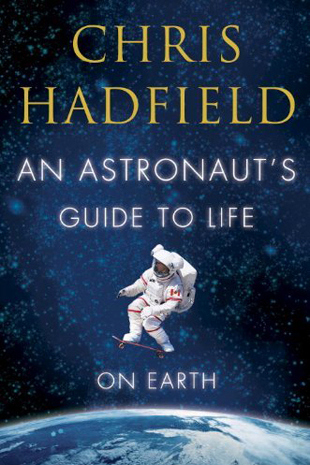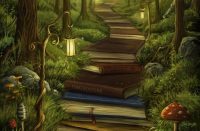Chris Hadfield, perhaps the first out-of-this- world rock star, wastes no time before waxing poetic in his book about the bounteous beauty of space and our planet. “The windows of a spaceship casually frame miracles,” he writes in the opening paragraph of his introduction. “Every 92 minutes, another sunrise [because this is how long it takes to circle the Earth at 27,700 km/hr]: a layer cake that starts with orange, then a thick wedge of blue, then the richest, darkest icing decorated with stars.
Chris Hadfield, perhaps the first out-of-this- world rock star, wastes no time before waxing poetic in his book about the bounteous beauty of space and our planet. “The windows of a spaceship casually frame miracles,” he writes in the opening paragraph of his introduction. “Every 92 minutes, another sunrise [because this is how long it takes to circle the Earth at 27,700 km/hr]: a layer cake that starts with orange, then a thick wedge of blue, then the richest, darkest icing decorated with stars. The secret patterns of our planet are revealed: mountains bump up rudely from orderly plains, forests are green gashes edged with snow, rivers glint in the sunlight, twisting and turning like silvery worms. Continents play themselves out whole, surrounded by islands sprinkled across the sea like delicate shards of scattered eggshells.”
This is the man who has made space exploration sexy again, through his social-media savvy, his astonishing photographs of Earth and especially his hauntingly beautiful rendition of David Bowie’s classic “Space Oddity.” Perhaps this is surprising, since most of us think of astronauts as science geeks or former military men turned space cowboys.
Hadfield sometimes lapses into military-speak, for example shortening words like simulation (“sim”) and debriefings (“debriefs”). Otherwise, this is a very accessible and highly enjoyable account of a Canadian space hero, from his dream of becoming an astronaut at age nine after watching the Apollo moon landing, to becoming the first Canadian to command the International Space Station (ISS).
As its title suggests, the book isn’t only about his adventures in space. He often takes lessons he’s learned and makes them applicable to everyone. For instance, sometimes it is necessary to “sweat the small stuff,” such as all the minor details that keep an astronaut safe. He tells those who ask him how lonely it was in space that some of the loneliest people on the planet live in the biggest bustling cities. “Loneliness, I think, has very little to do with location,” Hadfield writes. “It’s a state of mind.”
In one piece of practical philosophy, he explains why you should “aim to be a zero” instead of a minus-one or plus-one personality. The former is a person who is “actively harmful, someone who creates problems,” while the latter “actively adds value.” But “proclaiming your plus-oneness at the onset almost guarantees you’ll be perceived as a minus one, regardless of the skills you bring to the table or how you actually perform.” A zero is someone who is “competent enough not to create problems or make work for everyone else” and then proves their extraordinary worth.
Hadfield is also quintessentially Canadian. He often expresses his appreciation to taxpayers, although he points out that the Canadian Space Agency’s budget is less than Canadians spend on Halloween candy. He relays stories from space such as drinking Tim Hortons and conversing with Canadian rock icon Neil Young.
For all the riveting drama of his experiences both in orbit and on Earth, Hadfield does not spend a lot of time discussing environmental destruction. He points out certain problems such as deforestation in Madagascar and destruction of the Aral Sea, but he eschews politics as a mechanism for correction, suggesting instead that we all must become better stewards.
Clearly Hadfield was profoundly moved by his awe-inspiring travels. He recognizes his own fleeting fame and relishes his role in educational outreach about space, science and life itself. Running throughout his book is great humanity, humour and wisdom. He tells the story of getting vasectomies with his best friend and fellow pilot Tristan de Koninck, then writes of having to hold it together while performing “This Old Guitar” at de Koninck’s funeral, after his friend died in a CF-18 fighter crash.
One of the most moving lines in the book is where Hadfield explains how it felt to be in the Soyuz capsule, waiting to return to Earth. “I would not be back in the ISS again, but that was all right,” he writes. “Earth is home to everyone I love.”
An Astronaut’s Guide to Life on Earth, Chris Hadfield, Toronto: Random House of Canada, 2013, 304 pages.
This review originally appeared in Resource Wars, issue 40.1. Subscribe now to get more book reviews in your mailbox!
Reviewer Information
Claudio D’Andrea is an award winning journalist and edits special features for the Windsor Star.













